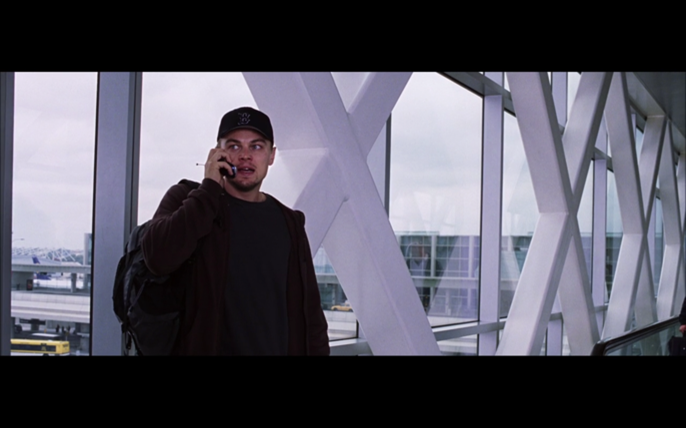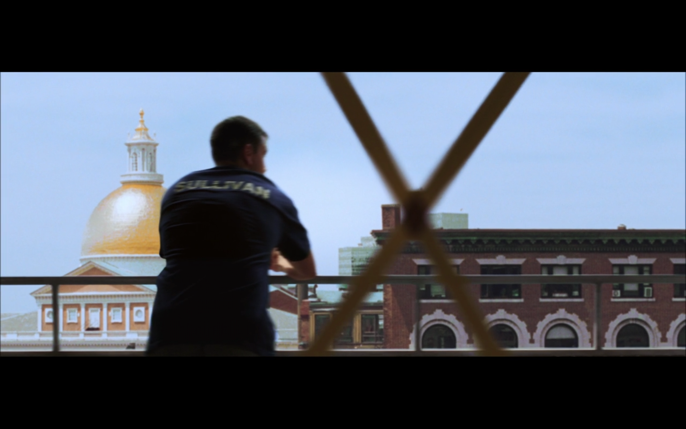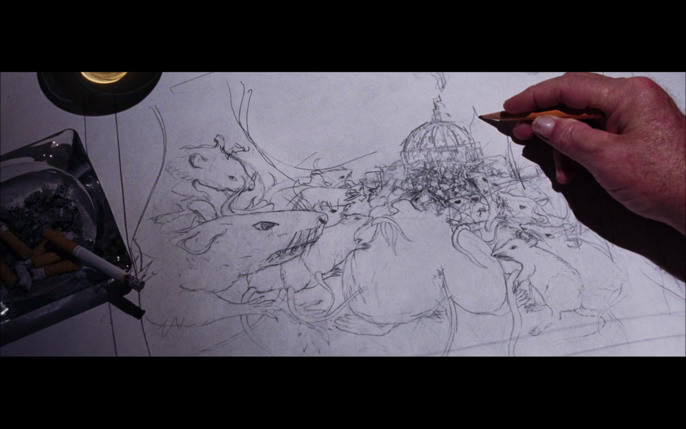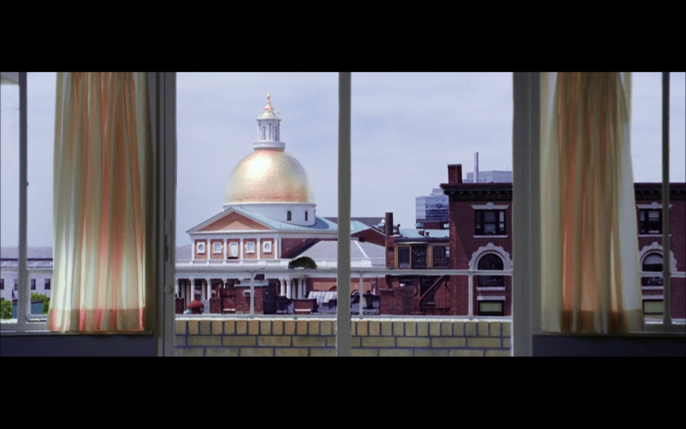Dialogue is used to express what a character is thinking; however, it is a film’s visual aesthetic that subconsciously talks to the audience. In 2006, Martin Scorsese directed the film The Departed, which would win him his first Academy Award for directing; the film would also win Best Picture. The film follows two men, Colin Sullivan (Matt Damon) and Billy Costigan (Leonardo DiCaprio). Colin grew up under the supervision of Frank Costello (Jack Nicholson), who is in charge of the Irish-American mob in South Boston. Colin becomes a cop and acts as a mole for Frank, keeping him one step ahead of the police force. On the other hand, Billy joins the police force and is asked to go undercover in Frank’s crew. Eric Willis states in his article titled “The Departed”: “Scorsese’s film plays out the struggle between two kinds of betrayals. There is an irony in Costello delivering his punning advice to Costigan, the police informer in his midst, who is struggling to maintain his act as a member of Costello’s gang while driven by his own morality” (46). As you can probably imagine, things do not go according to plan when a mole and an undercover cop are operating on different terms. Death, power, and double-crossing are the foundation for this film and are expressed in different ways through visual motifs.
In a film titled The Departed, death would be no surprise for the audience. However, when a movie constantly tells the audience what will happen, the audience tends to overlook the simple details. For example, throughout the film, an “X” can be seen in the characters’ surroundings – for instance, the architecture of a building, on windows, or via set decoration (Figure 1). These “X” symbols foreshadow death for these characters before the audience even knows why a specific character “deserves” to die. This visual motif occurs throughout the film subconsciously to the audience, informing viewers that this character will meet their demise. Nobody wants to know the ending of a film before it’s over, but this film screams to its audience the ending, and they are too captivated by the story to even realize. Yet another visual motif is crucial for the film, and that is power.
Colin works for the police force. He has seen what power looks like in the underworld but wants power legally. A visual metaphor for Colin’s lust for power is the Massachusetts State House, also referred to as “the golden dome” (Figure 2). Jean-Pierre Gorin says it best in his article in Film Comment: “Colin was born into corruption, now setting [his] sights on the golden dome of the State House” (33). The State House represents the pinnacle of legal power for Colin. The visual motif is shown by having Colin and the golden dome in the same frame, even when he is not looking directly at it. This visual motif echoes the last frame of the film, when a rat is seen in the same frame of the golden dome (just as Colin would be).
“Rat” is a term used to call someone a snitch or a double-crosser. Rats symbolize disloyalty and are referenced and shown multiple times in The Departed. During a scene with Frank and Billy, Frank states to Billy, “I got this rat, this gnawing, cheese-eating fuckin’ rat, and it brings up questions.” Frank is, of course, referring to Billy, but he does not know that Billy is indeed the rat. While this discussion takes place, Frank draws a photo of rats taking over the golden dome (Figure 3). As mentioned before, the film’s last scene has a rat walking across a rail. This frame alone symbolizes the film’s tone: good and bad, honesty and disloyalty (Figure 4).
Visual motifs are the hidden patterns that help support the structure of a film. The visual motifs in The Departed are seen in “X”s, a golden dome, and rats. These symbols represent death, power, and disloyalty. While there are probably more visual motifs that I have not discussed, the three I have focused on here help lay the pathway for understanding how to find other visual motifs in different films.
Author Biography
Joey McDevitt is a film studies student at the University of North Carolina Wilmington. He has been passionate about film since he took a summer class before high school. He is an aspiring entertainer with a strong interest in film directing. He wrote and directed a short film for the NJ Five Day Film Festival. When not in class, you can find him in the theaters.
References
Gorin, Jean-Pierre. “Dramatis Personæ: Scorsese’s ‘The Departed’ Is the High-Performance Vehicle of the Year.” Film Comment, vol. 42, no. 6, 2006, pp. 30–33, http://www.jstor.org/stable/43458517.
Scorsese, Martin, et al. The Departed. Warner Bros. Pictures, 2006.
Wills, Eric. “The Departed.” Philosophy Now, no. 65, Jan. 2008, pp. 46-47. EBSCOhost, search-ebscohostcom.liblink.uncw.edu/login.aspx?direct=true&db=f3h&AN=30104066&site=ehost-live.








































